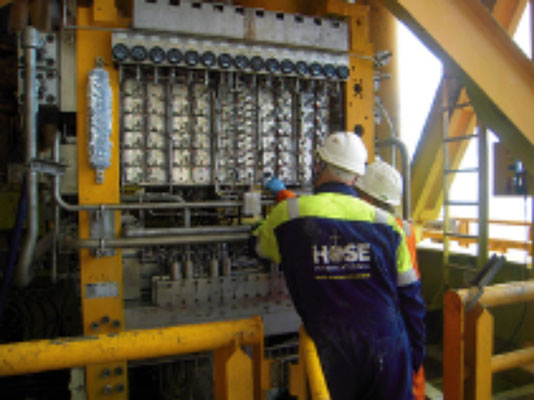How to Survive a Rig Inspection: WCE revisited
In our previous blog series How To Survive a Rig Inspection, our head of Rig Inspection Services Steven Lee shared tips on how operators and owners can get through rig inspections with flying colours as well as avoiding common pitfalls.
Now that AqualisBraemar has teamed up with HOSE International, we revisit the topic of Well Control Equipment.
Well Control Equipment revisited
Steven Lee, head of Rig Inspection Services

HOSE International recognises that, more often than not, well control equipment is the largest project cost item for our clients in terms of schedule when preparing for operations, and more importantly the financial and reputational costs when it is not operating. For these reasons, O&G Operators, as the duty holders on operational wells where WCE is in operation, see the necessity of having independent third-party (ITP) assurance that equipment is compliant with required standards and operationally fit for purpose.
The risks of well control equipment not functioning correctly or being out with compliance for globally recognised standards and regional regulations can be significantly reduced with HOSE International ITP Assurance scopes.
When talk turns to compliance, the O&G Industry broadly abides by:
- API standards / recommended practices recognised globally
- Regional specific regulations such as OGUK (UK), NORSOK (Norway) and BSEE Well Control Rule 2019 (USA).
API Standard 53, is currently under its fifth edition, (issued in December 2018) and is recognised globally as the standard to which BOP system engineering and operating practices are performed to, improving reliability and reducing risks to acceptable levels. Regional regulations are broadly influenced by APIs. Obvious as it seems, the key to maintaining equipment compliance in the first instance is by WCE owners and operators following the latest published editions as revisions and updates are made periodically.
The inspection process (click through):
[vc_row][vc_column][vc_tta_tabs style=”modern” shape=”square” color=”peacoc” spacing=”5″ active_section=”1″ no_fill_content_area=”true”][vc_tta_section title=”Identify” tab_id=”Identify”][vc_column_text]Identify – the type of WCE and Systems to be inspected, along with regional regulations that apply to the Drilling units operating location[/vc_column_text][/vc_tta_section][vc_tta_section title=”Review” tab_id=”Review”][vc_column_text]Review – equipment documentation, procedures and personnel[/vc_column_text][/vc_tta_section][vc_tta_section title=”Inspect” tab_id=”Inspect”][vc_column_text]Inspect – physical internal equipment and system inspections[/vc_column_text][/vc_tta_section][vc_tta_section title=”Witness” tab_id=”witness”][vc_column_text]Witness – remedial action to equipment, systems and processes[/vc_column_text][/vc_tta_section][vc_tta_section title=”Test” tab_id=”test”][vc_column_text]Test – functionality and pressures integrity[/vc_column_text][/vc_tta_section][vc_tta_section title=”Report” tab_id=”report”][vc_column_text]Report – findings on the previous steps[/vc_column_text][/vc_tta_section][/vc_tta_tabs][/vc_column][/vc_row]

The areas where we frequently identify non-compliance are WCE certification, documentation and record-keeping.
Although there is a general awareness of applicable API and regional regulations and their importance among rig crews, there remain gaps when it comes to specific detail within these documents.
There are numerous requirements for WCE documentation to be available at the rig site with equipment OEM data books and certification also available for review.
On several recent inspections, our engineers have identified equipment believed to be certified was not, due to the certification not corresponding with serialisation of the physical equipment on-board. Without this simple level of equipment traceability, the equipment is simply not fit for purpose.
Where pressure testing of WCE is not possible to witness, there is an opportunity for our engineers to review previously conducted test records. Unfortunately, poorly recorded testing criteria and results are more commonly identified than expected, with charts and worksheets unsigned, undated, lacking test configuration, lacking reference to test equipment used and out with the pressure testing tolerance.
We can’t emphasise enough the importance of recording this level of detail to rig crews. Ultimately, in the event of an incident involving the WCE, recorded documentation may be reviewed in ordered to assess that the equipment was fit for service and shall be retained for a minimum of two years (per API S53 5th edtn).
Our advice for well control equipment owners/operators, regardless of a pending inspection, is to ensure equipment documentation is in order, available and that crews understand specifically how API S53 5th Edition applies to their rig.
